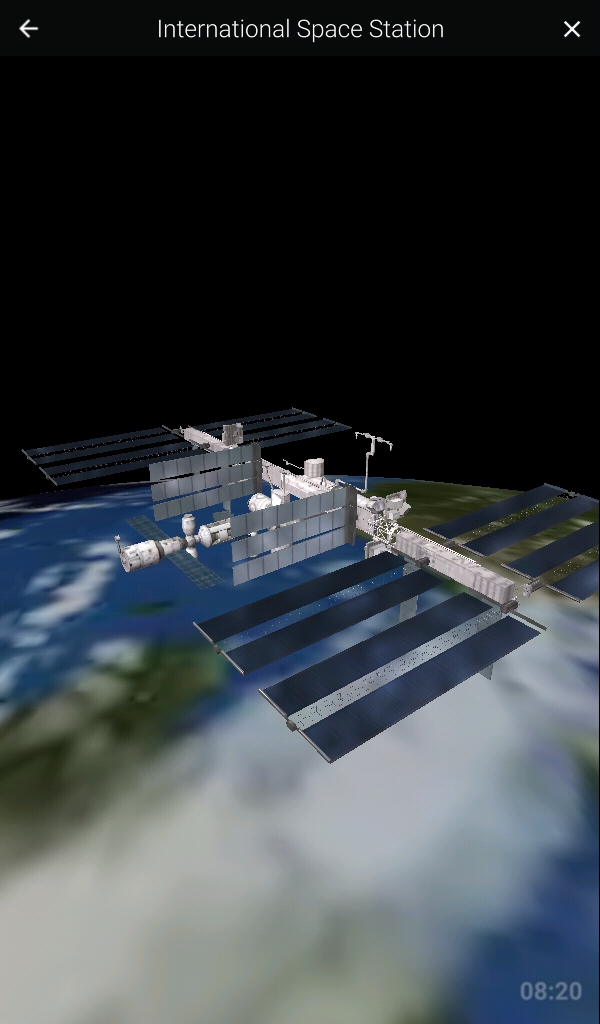| Original author(s) | Fabien Chéreau |
|---|---|
| Developer(s) | Alexander Wolf Georg Zotti Marcos Cardinot Guillaume Chéreau Bogdan Marinov Timothy Reaves Florian Schaukowitsch |
| Initial release | 2001 |
| Stable release | 0.21.0[1] / 28 March 2021 (24 days ago) |
| Repository | |
| Written in | C++ (Qt) |
| Operating system | Linux, Windows, macOS |
| Platform | PC, Mobile |
| Size | 337 MB (Linuxtarball) 257 MB (Windows installer) 236 MB (macOS package) |
| Type | Educational software |
| License | GNU GPLv2[2] |
| Website | stellarium.org |
Stellarium is an open-source free-softwareplanetarium, licensed under the terms of the GNU General Public License version 2, available for Linux, Windows, and macOS. A port of Stellarium called Stellarium Mobile is available for Android, iOS, and Symbian as a paid version, being developed by Noctua Software. All versions use OpenGL to render a realistic projection of the night sky in real time.[citation needed]
So, lets start Stellarium. After fresh installation, Stellarium sets the location to Paris, France, but you can change the location to be anywhere on earth or even on planets. We will explain different ways to set the location where we discuss Location Setting. Stellarium is a free GPL software which renders realistic skies in real time with OpenGL. It is available for Linux/Unix, Windows and MacOSX. With Stellarium, you really see what you can see with your eyes, binoculars or a small telescope. Stellarium/stellarium. Stellarium is an open-source free-software planetarium, licensed under the terms of the GNU General Public License version 2, available for Linux, Windows, and macOS.A port of Stellarium called Stellarium Mobile is available for Android, iOS, and Symbian as a paid version, being developed by Noctua Software. Www.eyesonthesky.com This Stellarium tutorial shows how to quickly get started the date, time, speed and navigation functions of left/right/up/down motions.

Stellarium was featured on SourceForge in May 2006 as Project of the Month.[3]
History[edit]
In 2006, Stellarium 0.7.1 won a gold award in the Education category of the Les Trophées du Librefree software competition.[4]
Stellarium User Guide
A modified version of Stellarium has been used by the MeerKAT project as a virtual sky display showing where the antennae of the radiotelescope are pointed.[5]
In December 2011, Stellarium was added as one of the 'featured applications' in the Ubuntu Software Center.[6]
Planetarium dome projection[edit]
The fisheye and spherical mirror distortion features allow Stellarium to be projected onto domes. Spherical mirror distortion is used in projection systems that use a digital video projector and a first surface convex spherical mirror to project images onto a dome. Such systems are generally cheaper than traditional planetarium projectors and fish-eye lens projectors and for that reason are used in budget and home planetarium setups where projection quality is less important.[citation needed]
Various companies which build and sell digital planetarium systems use Stellarium, such as e-Planetarium.[7][non-primary source needed]
Stellarium Scope

Digitalis Education Solutions, which helped develop Stellarium, created a fork called Nightshade which was specifically tailored to planetarium use.[8][9][non-primary source needed]
VirGO[edit]
VirGO is a Stellarium plugin, a visual browser for the European Southern Observatory (ESO) Science Archive Facility which allows astronomers to browse professional astronomical data. It is no longer supported or maintained; the last version was 1.4.5, dated 15 January 2010.[10][non-primary source needed]

Stellarium Mobile[edit]
Stellarium Mobile is a fork of Stellarium, developed by some of the Stellarium team members. It currently targets mobile devices running Symbian, Maemo, Android, and iOS. Some of the mobile optimisations have been integrated into the mainline Stellarium product.[citation needed][11][non-primary source needed][dead link]
Screenshots[edit]
Constellation art in version 0.6.2
Constellation art in version 0.10.1
Mars and its moons in Stellarium 0.14
Equatorial and Azimuthal Grids in Stellarium 0.14
Screenshot of Night Mode in Stellarium 0.14
See also[edit]
Stellarium.org Download

- Space flight simulation game
References[edit]
- ^'Stellarium v0.21.0 has been released!'. 2021-03-28. Retrieved 2021-03-29.
- ^'~stellarium/stellarium/trunk : contents of COPYING at revision 9976'. bazaar.launchpad.net.
- ^'Project of the Month – May 2006 – Stellarium'. SourceForge. May 2006. Retrieved 2008-09-25.
- ^'The third Free Software Awards placed under the sign of the international'. Les Trophées du Libre 2006 website. Archived from the original on 2008-12-21. Retrieved 2009-02-16.
- ^'Virtual sky display in MeerKAT control room'. Ska.ac.za. Archived from the original on 2012-04-23. Retrieved 2012-06-16.
- ^'Software Centre app picks for December'. Ubuntu App Developer. Developer.ubuntu.com. 2011-12-14. Archived from the original on 2012-06-26. Retrieved 2012-06-16.
- ^'Stellarium Planetarium Software'. E-Planetarium website. Archived from the original on 2008-12-01. Retrieved 2009-02-15.
- ^'Nightshade Astronomy Simulation Software'. Digitalis Education Solutions official website. Retrieved 2010-01-11.
- ^'Nightshade Astronomy Simulator'. Nightshade official website. Retrieved 2010-01-11.
- ^'VirGO, The Visual Archive Browser'. ESO Science Archive Facility. Retrieved 2012-11-21.
- ^'Stellarium Mobile'. Noctua Software. Retrieved 2014-03-14.
External links[edit]
| Wikimedia Commons has media related to Stellarium. |
- Official website
Interface Guide
|
